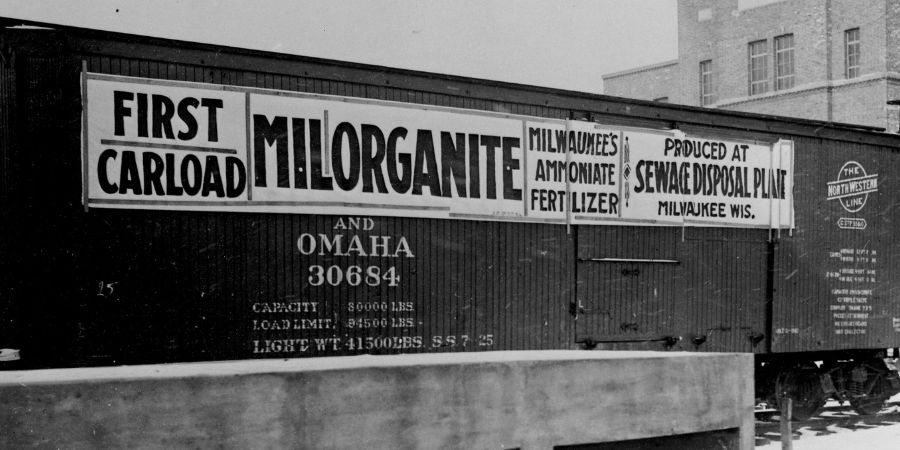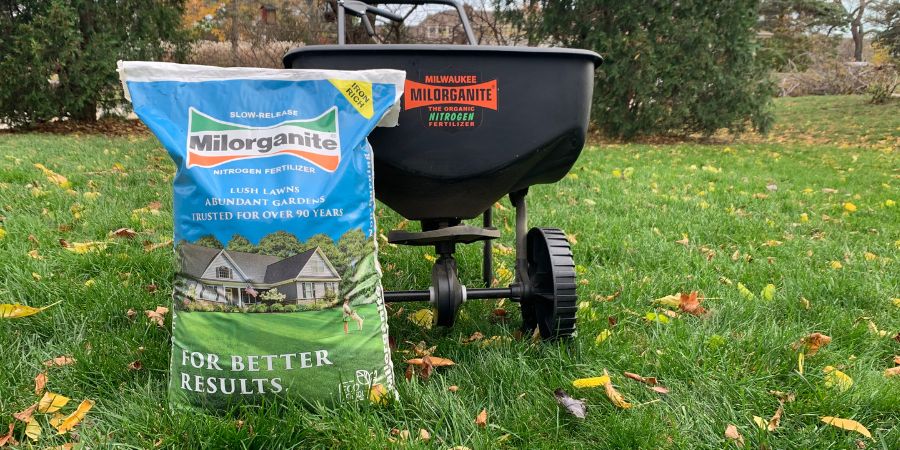What Makes Milorganite Different Than Other Fertilizers?
- Milorganite AgronomistDecember 2, 2023
Milorganite is different—from its history to its nutrient content—from most other fertilizers. Milorganite is one of the nation’s oldest recycling programs, continuously producing since 1926. Its nutrient content and how it makes nutrients available to plants also differentiate Milorganite from many other fertilizers. The “raw materials” to produce Milorganite make it unique compared to fertilizers that rely on synthetics and mined materials to manufacture quick-release fertilizers. Milorganite is a slow-release, organic-nitrogen fertilizer that both conditions the soil and provides nutrients to plants at a rate they can use.
Milorganite’s Unique History: Environmental Stewardship, Clean Water
Milorganite’s history goes back nearly a century to when it was first produced in 1926. It has been in operation since.

Milorganite, a low-nitrogen, slow-release fertilizer, is a byproduct of the environmental stewardship goals of the Milwaukee Metropolitan Sewerage District (MMSD) and Milorganite to:
- maintain the health of regional waterways, the environment, and citizens by returning clean water to Lake Michigan ;
- divert material from landfills; and,
- find the most cost-effective methods to do both.
Milorganite is the end result of one of the oldest recycling efforts in the country. Instead of recycling metal, plastic, and paper, Milorganite is recycled nutrients from wastewater. Since production started, more than 10 billion lbs. of waste has been diverted from landfills.
Milorganite may have been created to cost-effectively maintain safe, clean drinking water, but it also happens to be an excellent slow-release, organic-nitrogen fertilizer.
Milorganite is Recycled Nutrients
Production continues today using the same principles of recycling nutrients from wastewater into a slow-release, organic-nitrogen fertilizer—Milorganite.
During MMSD’s wastewater treatment process, microbes digest the nutrient-rich material. When the microbes have digested all the nutrients they can handle, they die. The dead microbes then go through processes to remove most of the water. The resulting material is then dried kiln dried, and the results are granules of Milorganite.
Milorganite is analyzed daily to ensure guidelines are met for human health and the environment. It’s then bagged and distributed throughout the nation.
Milorganite Contains Primary, Secondary and Micronutrients Plants Need
Most soils don’t provide enough of the essential nutrients plants require for optimum growth. Lost nutrients will need to be replenished to ensure your plants have the food needed to flourish. Even nutrient-rich soil will eventually need to be supplemented with additional nutrients essential for plant growth. Nutrients are often replenished using fertilizers.

Fertilizers typically include three primary nutrients that plants need—nitrogen (N), phosphorus (P), and potassium (K). Fertilizers are applied to replenish these nutrients in the soil. The NPK analysis of Milorganite is 6-4-0. That means there’s 6% nitrogen (N), 4% phosphorus (P), and less than one percent potassium in each bag.
Milorganite also contains secondary and micronutrients, all essential to plant grown, but only in very small quantities. Fertilizer industry guidelines prevent Milorganite from listing secondary and micronutrients, because they are such small amounts of each.
There are three secondary nutrients—calcium (Ca), sulfur (S), and magnesium (Mg)—that plants require in moderate amounts, all of which are found in Milorganite.
Plants only require very small amounts of micronutrients. Those found in Milorganite include: boron (B); copper (Cu); iron (Fe); chloride (Cl); manganese (Mn), molybdenum (Mo); and, zinc (Zn). Nutrient-rich soil may already contain sufficient amounts of each.
Milorganite is an Organically Based, Slow-release Fertilizer Compared to Synthetic, Quick-release Fertilizers
Slow-release fertilizers derived from organic-based materials, such as Milorganite, help condition and feed the soil’s ecosystem. Healthy soil grows healthy plants.
Organically based fertilizers are derived from living things or their byproducts, such as compost, composted manure or bone meal, among others. Microorganisms that have digested organic materials in wastewater are the source of nutrients in Milorganite. The nutrients in Milorganite are released slowly over several weeks at a rate plants can use.
Milorganite contains organic, slow-release nitrogen, but it is not “organic certified.” Quick-release, synthetic fertilizers are manufactured using chemicals or inorganic materials from the air, mineral deposits, and petroleum by-products, among other inorganic materials
Synthetic fertilizers quickly release nutrient to feed the plants and do very little to improve the soil’s ecosystem. The quick hit of chemically based fertilizer may provide more immediate results than Milorganite, but for a shorter period of time. There’s also a greater risk of nutrient run-off into area waterways when using synthetic fertilizers.
You Can Use Milorganite to Fertilizer Your Entire Yard and Garden
Other fertilizers are generally manufactured for a specific purpose, such as lawns, flower gardens, vegetable gardens, and palms. Milorganite is a great lawn fertilizer and can be safely used throughout your entire yard, landscape, and gardens.
You Won’t Burn Your Lawn Using Milorganite
An important characteristic of Milorganite that makes it different from chemical-based fertilizers is that it's less likely to burn. That’s because Milorganite is manufactured using organic materials. Using Milorganite, you won’t accidentally end up with burned, brown rows in your lawn as you might experience if you over-apply synthetic fertilizers.

Milorganite is great for homeowners who are new to caring for lawns, landscapes, and gardens. Even if you spill a significant amount of Milorganite while filling your spreader, it still won’t burn the lawn. Just scoop up what you can and distribute the remaining Milorganite using a rake or broom.
Milorganite doesn’t need to be watered in like synthetically made fertilizers, although watering will speed up the process of releasing nutrients into your lawn.
Iron in Milorganite Lasts Longer, Won’t Stain
The nutrients in Milorganite come directly from nutrients found in wastewater, with one exception: iron.
In addition to the iron naturally found in the region’s wastewater, it is also added as part of the water treatment process to recover phosphorus. Iron is a key nutrient grass needs to maintain its green color. Milorganite customers have for decades relied on Milorganite’s iron to maintain the greenest lawns possible.
Not all iron is created equal and the type of iron in Milorganite sets it apart from many other fertilizers.
There are two primary forms of iron: iron sulfate (a salt) and chelated iron. Iron sulfate is less expensive to produce and can commonly be found in fertilizers or in stand-alone products. It can quickly treat chlorosis—an iron deficiency in plants that results in light or yellow-colored leaves. Two drawbacks to using iron sulfate: 1.) it works by adhering to the grass, which is cut off over time; and 2.) it can stain concrete walkways, drives and brickwork. If iron sulfate falls on any of these surfaces and isn’t immediately removed, it will leave a rust stain.
Milorganite contains chelated iron, a form of iron that is more readily available to plants for longer periods of time compared to iron sulfate, because it doesn’t need to remain on the surface of the grass blade. The iron in Milorganite helps maintain a greener lawn over a longer period of time and won’t stain concrete or other surfaces.
So, now you know how Milorganite differs from many other fertilizers: its source of nutrients, long-lasting results, and usefulness for lawns, landscapes, and gardens.

